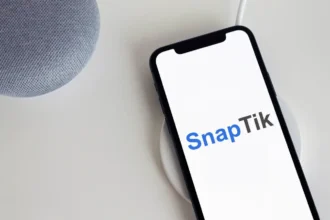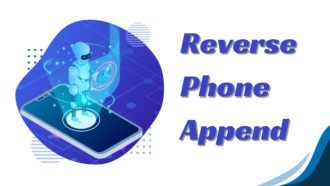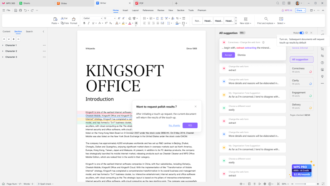Surfing with Inclusivity: 10 Steps to Enhance Internet Accessibility
- 1 How to enhance Internet accessibility in 10 ways
- 1.1 Prioritize Accessibility in Design
- 1.2 Understand User Needs
- 1.3 Implement Responsive Design
- 1.4 Utilize Assistive Technologies
- 1.5 Provide Alternative Text for Multimedia
- 1.6 Ensure Keyboard Accessibility
- 1.7 Captioning and Subtitling for Videos
- 1.8 Regular Accessibility Audits and Testing
- 1.9 Educate Content Creators
- 1.10 Advocate for Policy Changes
- 2 Conclusion
The internet, often referred to as the information superhighway, is an integral part of our daily lives. However, not everyone experiences the digital landscape in the same way. Internet accessibility remains a challenge for many individuals with disabilities, limiting their ability to fully participate in the online world. In this article, we will explore 10 steps to enhance internet accessibility, ensuring that the web is a place where everyone can surf with inclusivity.
How to enhance Internet accessibility in 10 ways
Prioritize Accessibility in Design
The journey towards enhancing internet accessibility begins with prioritizing inclusivity in the design process. Websites and applications should be crafted with accessibility at the forefront, considering the diverse needs of users.
By incorporating universal design principles, developers can create interfaces that are not only visually appealing but also intuitive, flexible, and customizable to accommodate individuals with varying abilities and preferences. Additionally, when providing internet for housing recipients, you need to ensure that the digital interfaces are not only accessible but also tailored to the specific challenges and requirements faced by this group.
Understand User Needs
To truly enhance internet accessibility, developers and designers must have a deep understanding of user needs. Conducting user research and seeking input from individuals with various disabilities can provide valuable insights. This user-centric approach ensures that the internet is designed to meet the diverse requirements of its users, fostering more inclusive online environment.
Moreover, incorporating universal design principles is vital. Beyond accommodating disabilities, a user-centric approach prioritizes intuitive interfaces and diverse user experiences. This not only enhances accessibility but also elevates the overall usability for everyone, creating a more inclusive and user-friendly online environment.
Implement Responsive Design
In the era of diverse devices and screen sizes, responsive design is paramount. An accessible website should adapt seamlessly to different devices, ensuring a consistent and user-friendly experience. This is particularly crucial for individuals with disabilities who may use specific devices or assistive technologies to navigate the web. Responsive design contributes significantly to breaking down barriers and promoting equal access.
Utilize Assistive Technologies
Assistive technologies play a pivotal role in enhancing internet accessibility. Developers should ensure compatibility with screen readers, voice recognition software, magnifiers, and other assistive tools. By incorporating features such as alternative text for images and proper semantic markup, websites become more navigable for individuals with visual impairments, empowering them to engage with digital content effectively.
Provide Alternative Text for Multimedia
Multimedia elements such as images and videos are integral to web content, but they can pose challenges for individuals with visual or auditory impairments. Including descriptive alternative text for images and captions or transcripts for videos ensures that all users, regardless of their abilities, can access and comprehend the content. This step not only enhances accessibility but also contributes to improved search engine optimization.
Ensure Keyboard Accessibility
Not all users interact with the internet using a mouse or touchpad. Keyboard accessibility is vital for individuals with motor impairments who rely on keyboard navigation. Websites should be designed to be fully operable using a keyboard alone, allowing users to navigate, interact, and access information without hindrance.
Captioning and Subtitling for Videos
Video content has become increasingly prevalent on the internet, making captioning and subtitling essential for accessibility. Adding captions not only assists users with hearing impairments but also benefits those in noisy environments or situations where audio cannot be played. Subtitling in multiple languages further broadens the audience reach and fosters a more inclusive online space.
Regular Accessibility Audits and Testing
Ensuring internet accessibility is an ongoing process that requires regular evaluation. Conducting accessibility audits and testing, involving users with diverse abilities, helps identify and address potential barriers. Regular assessments contribute to the continuous improvement of web accessibility, making websites more user-friendly for individuals with varying needs.
Educate Content Creators
Content creators play a significant role in shaping the online experience. Educating them on accessibility best practices ensures that digital content is created with inclusivity in mind. Training programs can cover topics such as creating accessible documents, using proper headings and structures, and understanding the importance of color contrast for readability.
Advocate for Policy Changes
To truly enhance internet accessibility, there needs to be a broader societal shift. Advocacy for policy changes that mandate accessibility standards is crucial. Governments, industry associations, and advocacy groups should work collaboratively to develop and enforce policies that promote digital inclusivity. These policies can incentivize businesses to prioritize accessibility in their digital offerings, fostering a more accessible and equitable internet.
Conclusion
In the ever-evolving digital landscape, enhancing internet accessibility is not just a technological challenge; it’s a commitment to inclusivity and equal opportunity. By following these 10 steps, we can collectively create a more accessible internet where individuals of all abilities can surf with inclusivity. The goal is not merely compliance with accessibility standards but a genuine transformation of the online world into a space that empowers and includes everyone, breaking down barriers and unlocking the vast potential of the internet for all.




















